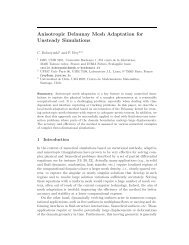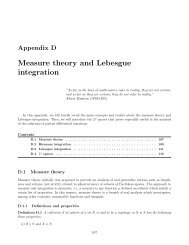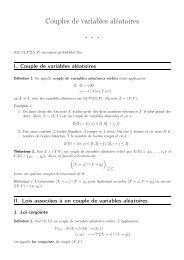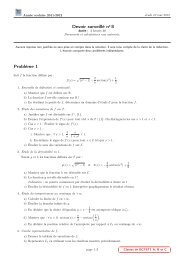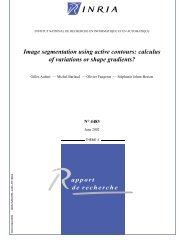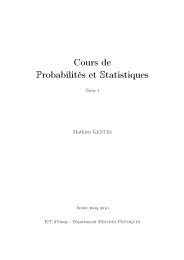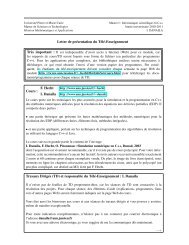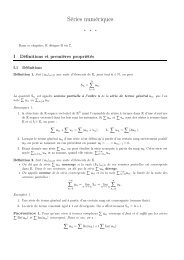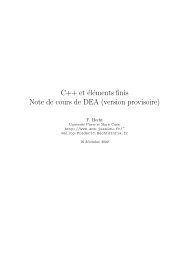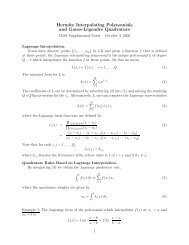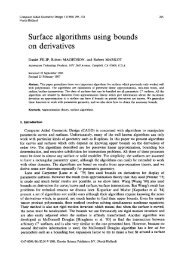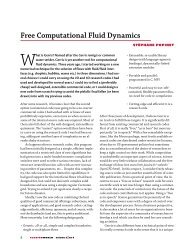pdf file
pdf file
pdf file
You also want an ePaper? Increase the reach of your titles
YUMPU automatically turns print PDFs into web optimized ePapers that Google loves.
BOGOLIUBOV SPECTRUM OF INTERACTING BOSE GASES 19<br />
Proof. First, sinceht = −∆+Vt(x)−µH(t), whereVt(x) := (|u0| 2 ∗|.| −1 )(x)−<br />
t −1 |x| −1 is relatively compact with respect to −∆, we obtain σess(ht) =<br />
[−µH(t),∞). Thus σess(Ht) = [infσ(Ht)−µH(t),∞) by (ii) in Theorem 1.<br />
The other statements follow from (iii) in Theorem 1 and the fact that ht has<br />
infinitely many eigenvalues below its essential spectrum if and only if t < 1.<br />
In fact, if t < 1, then Vt(x) = mt ∗|.| −1 where the measure<br />
R 3<br />
mt := |u0| 2 −t −1 δ0<br />
has negative mass � m < 0, and we can follow [43, Lemma II.1].<br />
On the other hand, if t ≥ 1, then by applying Newton’s Theorem for the<br />
radially symmetric function |u0(x)| 2 , we can write<br />
�<br />
|ut(y)|<br />
Vt(x) ≥<br />
2 1<br />
dy −<br />
max{|x|,|y|} |x| =<br />
�<br />
|ut(y)| 2<br />
� �<br />
1 1<br />
− dy.<br />
|y| |x|<br />
|y|≥|x|<br />
Because ut(x) decays exponentially, we obtain that [V(x)]− also decays exponentially<br />
and hence belongs to L 3/2 (R 3 ). Therefore, by the CLR bound<br />
(see e.g. [38, Theorem 4.1]), we conclude that ht has finitely many eigenvalues<br />
below −µH(t). �<br />
By the celebrated HVZ Theorem [47], one has<br />
σess(Ht,N) = [Σt,N,∞)<br />
where Σt,N is the ground state energy of the (N −1)-body Hamiltonian<br />
N−1 �<br />
�<br />
−∆i − 1<br />
�<br />
+<br />
t|xi|<br />
1<br />
N −1<br />
� 1<br />
|xi −xj| .<br />
i=1<br />
1≤i



